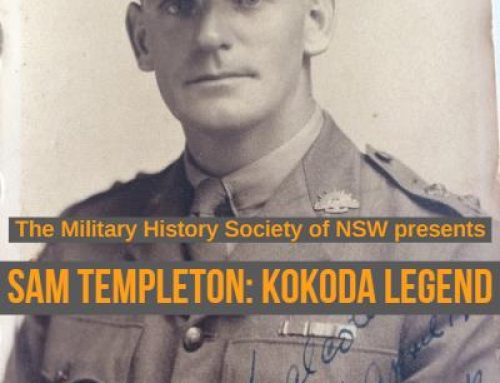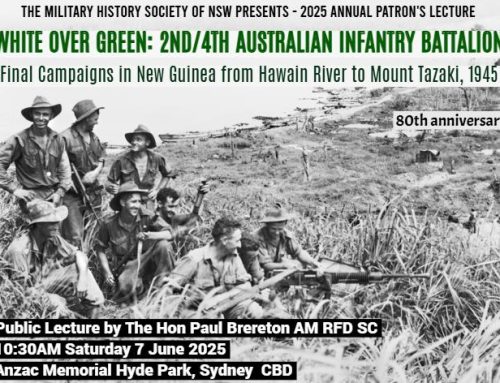The Military History Society of New South Wales Incorporated presents
Transitioning the Post-War ADF for Combat Operations in the Modern Age
By Peter Hayes

Before the RAAF has even taken possession of the latest addition to its arsenal of air weapons, the F35 – a 5th generation fighter – is being heralded as one of the most cyber tested weapon systems in the world – according to its manufacturer, Lockheed Martin.1 It is surely easy to imagine such testing is a complex process which has evolved over many years; about 20 years in fact – if not more.
Such processes are just one of many responses to a very sophisticated threat environment which has fuelled a new era of warfighting in the digital age. As well as being waged on sea, land, and in the air, warfare is now waged in a fourth dimension – commonly referred to by practitioners as the cyber dimension. This new form of warfare evolved as an outgrowth of Information Warfare which spawned new ways of warfighting; new strategies and tactics for defending and defeating hostile opponents.
And yet, so much of these new warfighting techniques are grounded in ages-old theory and practice. It is the weapons that have changed. In cyber warfare terms the new weapons are computers and software; targeting computers and software.
The cyber testing of air weapons is just part of a much broader sweep of related national defence Information Warfare (IW) capability which began to evolve from the early 1960s.
This presentation will look at the evolution of Information Warfare in the ADF over the period 1960 – 2000 with this period fixed at its beginning by the first appearance of digital computing and the end-point fixed by the transition to the new millennium – which came to be referred to as the Y2K Event. The fear of chaos arising from this transition was global – fuelled by national intelligence agencies everywhere hypothecating about the range of threats, vulnerabilities and hostile intentions.
This fascinating four decades will be viewed through the lens of an Air Force experience of post-war transition for combat operations in the “Modern Age”. In the 1960s, the Air Force led the ADF adoption and deployment of computing systems and in the late 1990s, reorganised its information operations to enhance conventional warfighting capabilities which were later to be comprehensively adopted and adapted across the Defence organisation and headed by a one-star Chief of Cyber Command from 29Jan2018.2
It is an evolution, deeply rooted in diverse areas ranging from defence strategy, capability and operational tactics, force organisation and roles, science and technology research, equipment hardware and software design and maintenance, procurement, commercial product development, evaluation and testing, physical security, intelligence, and media use.
1 Fighter jet ‘one of most cyber tested weapons systems in US defence inventory’, 29May2018,
http://home.bt.com/tech-gadgets/tech-news/fighter-jet-most-cyber-tested-weapons-systems-us-defence- 11364274836777 accessed 30May2018
2 Defence Chief announces new Command, https://news.defence.gov.au/media/media-releases/defence-chief- announces-new-command accessed 30May2018
Peter Hayes
Peter Hayes is a former RAAF Group Captain and his last appointment was with the Air Command Headquarters as Director of Information Warfare which included responsibilities for intelligence and security. He has served overseas, including war service in Vietnam, and domestically in a variety of senior roles.
He is a Graduate of the Australian Defence College and holds degrees in Economics, Business and Defence Studies. He has been a Councillor of the Defence Industry Courses Alumni since 2009 and is currently a member of the NSW ALP Economics Policy Committee.
Since his transition to civilian employment, Peter has worked in a range of roles and industry sectors; more recently as an independent Defence Industry Analyst and in his spare time, he works locally to assist fellow war veterans and other retired military personnel.
Saturday 6th October 2018, 2.00pm – 3.00pm
PLEASE NOTE THE NEW VENUE
Liverpool Room, Level 4, City of Sydney RSL, 561-567 George Street, Sydney
Although entry is free, a gold coin donation is appreciated. RSVP is essential by Wednesday 3rd October 2018 as numbers are restricted.
Call the President (Clinton Reilly) on 0418 671 582 or email rsvp@militaryhistorynsw.com.au






